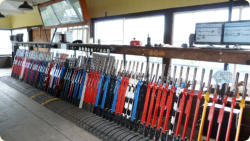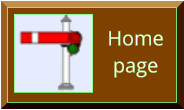The Future - Signalling Demonstration
Princes Risborough North Signal Box
The Demonstration Area
Our
ambition
is
to
open
a
‘hands
on’
demonstration
area
in
the
north
end
of
the
signal
box
housing
our
exhibits
and
showing
how
traditional
mechanical
signalling
and
telegraph
systems
operated
using
the
levers,
the
bell
telegraphs,
the
wood-cased
instruments
and
telephones,
and
the
polished
brass
switch
plungers;
the
complete mechanical signal box experience, open to visitors and our heritage train passengers alike.
There
are
a
few
hurdles
to
overcome
first!
For
example
we
are
going
to
need
to
install
a
new
internal
staircase
at
the
north
end
of
the
building
to
allow
separate
access
for
the
public.
These
staircases
were
common
in
many
similar
boxes,
and
we
can
copy
that
style
so
it
looks
the
part.
Such
modification
will
require
listed
building
consent,
and
will
get
caught
up
in
modern
day
building
regulations
but
in
the
context
of
an
1904
historical
Grade
II
listed
building.
Initial
drawings
are
in
the
process
of
being
submitted
to
the
relative departments and we hope to be given approval in due course.
Although
we
are
still
a
long
way
off
from
opening
the
area
to
the
public
on
a
regular
basis,
we
have
held
some
well
received
Open
Days
and
have
been
able
to
demonstrate
some
items
we
have
so
far
been
able
to
assemble.
One
such
item
is
a
simulator
which
monitors
train
movements
on
the
main
Chiltern
Lines
and
taps
out
authentic
bell
codes
that
would
have
passed
between
Risborough
and
the
long
vanished
Saunderton
and
Haddenham
signal
boxes.
There
were
bell
codes
to
describe
for
example,
passing
a
train
along
the
line
towards
the
next
box,
or
closing
a
signalbox
for
the
night
(part
time
boxes
only)
and
there
was
even
a
special
code
for ‘Royal Train approaching’. Woe betide any signalman who didn’t give a run of green signals to
that
train!
Another
artifact
we’ve
connected
up
to
be
able
to
demonstrate
is
a
signal
repeater
instrument.
These
devices
were
used
to
show
the
aspect
of
signals
that
were
out
of
sight
of
the
signalman.
They
were
wired
up
to
switches
on
the
actual
signal
itself
and
told
the
signalman
that
the
signal
arm
had
changed
in
response
to
him
throwing
the
signal
lever
in
the
box.
In
railway
terms
‘on’
means
danger
or
caution,
whilst
‘off’
means
proceed.
Our
repeater
cheats
a
bit
and
works
directly
from
the
lever
in
the
box
but
it
shows
what
a
signalman would be looking out for.
We
also
have
a
computer
display
which
constrasts
how
a
signaller
on
the
present
day
Chiltern
Railways
controls
the
railway
with
how
a
50’s
signalman
did.
The
signallers
at
Marylebone
control
all
lines
from
London as far as Aynho and beyond. All routes and signals are set by the click of a mouse!
The
black
oblongs
along
the
line
are
called
berths
and
if
a
train
is
present
in
that
location,
it
will
display
the
trains
reporting
number
-
a
unique
number
assigned
to
every
train
and
in
the
past
referred
to
as
a
‘headcode’.
The
map
above
shows
the
Princes
Risborough
area
at
a
busy
time!
The
train
1Y60
which
has
left
Haddenham
&
Thame
Parkway
on
its
way
to
London
is
being
given
priority
over
train
2H61
which
is
being
held
on
a
red
signal
(number
178)
on
the
outskirts
of
Princes
Risborough
on
the
Aylesbury
branch.
Train
number
5P46
is
stuck
behind
it
at
signal
180
at
Little
Kimble.
The
top
lines
are
the
Aylesbury
to
Amersham
route
showing
2C60
happily
on
its
way
to
London
and
now
under
control
of
the
London Underground signallers, with 2B44 on a clear run all the way from Wendover to the outskirts of Aylesbury.
Contrast
that
with
the
below
map
of
responsibilty
of
our
Princes
Risborough
signalman
of
yesteryear.
The
one
signalling
centre
at
Marylebone
replaces
all
the
manual
signal
boxes
along
the
line
including
at
least
four
local
boxes
from
100
years
ago.
Progress
indeed!
(unless
you
were
a
signalman
at
Haddenham,
or
Saunderton, or Risborough South or North…)














courtesy of OpenTrainTimes.com


